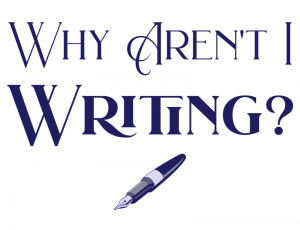Highlander! Yay! More swash and buckle!
I downloaded the Highlander script before Christmas to try and get a feel for how different writers approach the writing of swordplay, only to discover that Gregory Widen, Peter Bellwood and Larry Ferguson took the minimalist approach to the problem. Still, it'll be fun to watch it, as I've not seen it for years and there's nothing like a quick 'There can be only one!' to set you up for the weekend.





Y'know, in Asian cinema it is usual to have two directors: one who does the 'dramatic' scenes and an action director who deals with all the fights. I must admit that I thought it was strange that you were 'writing' the swordfights; wouldn't that be something for the director and the fight choreographer to work out during pre-production? I mean, OK, if there are key dramatic moments in the fight then you could put that in the script (X chops off Y's hand), I could understand that.
But what do I know? I have only ever written one screenplay when I was 18 and it was shit.
Visit me @ http://www.steve-kane.co.uk
Yeah, it's the same in Hollywood too. The details of the fight are left down to the fight choreographer. But you still have to illustrate the actions that have dramatic purpose.
For example, take the fight between Will and Jack in the smithy in Pirates. You can't just say that 'they fight' because you're trying to illustrate several points about the characters: that Jack is a pirate and cheats, but that he’s not willing to kill Will with the single shot left in his pistol; that Will is an expert swordsman and makes all the swords you see in the smithy, and that he's in love with Elizabeth. The fight itself reveals aspects of their personality, it's not just a scrap.
Thus you have to put in the key points, starting with Jack slapping Will on the hand with the flat of the blade, and going through all the key moments until Jack is finally knocked out by Mr Brown.
What Rossio and Elliott don't do is actually choreograph the fight in detail. For one of the key sections of the fight, for example, it just says 'Will and Jack duel. Their blades flash and ring.' but at any point there is important information to be imparted, they state it, e.g. 'Jack's chain smashes across Will's sword, disarming him. Will picks up another.'
So it's a fine line between writing enough to keep the scene alive, and not writing unnecessary detail.
The thing is, you need to know more than you put down on the page, and in this case it's important to understand the dynamics of a sword fight in order to pick out only the relevent points. That’s what I’ve been trying to do the last week or so.
Admittedly, the best thing to do would be to actually go and learn how to use a sword myself, but I've not got time or chance right now. I have fenced before, but it's been a long time since I last held a foil. However, Randal's being an amazing help in terms of answering my questions, giving me examples and helping me with suggestions. I don't think i could have written what I've written without someone like Randal to help me out.
As he's a fight choreographer as well as knowledgeable about historical swordplay, he understand what I'm trying to achieve. Which is very useful!
Anyway, you’ll see what I’ve done when I finally post it up on Zoe.
Well, that'll teach me to parade my ignorance in public.
Visit me @ http://www.steve-kane.co.uk
Bah, what's ignorance but simply not knowing? And you can't know everything, can you?
I am appalled at how much I don't know.
Going back to Asian films: the way they work is slightly different to a Hollywood director working with a fight choreographer. The 'action' director doesn't just work out the fights while the 'dramatic' director decides where to put the camera and suchlike; the 'action' director completely takes over from the 'dramatic' director for the fight scenes, working out the camera moves, the angles, the lighting… Obviously, the two directors work closely to decide the overall look of the film and make sure that the dramatic scenes blend seamlessly with the action scenes, but when it comes to shooting they pretty much leave each other alone to get on with their own specific segments.
Whereas in Hollywood, a fight choreographer may work out the movements of a fight but it is still the director who decides how to shoot it.
Visit me @ http://www.steve-kane.co.uk
You shouldn't be appalled at what you don't know because no one can know everything and you know stuff that, for example, I don't. Cos I didn't know about how it works in Asian films.
It's an interesting concept, though, that the fight director takes control of the whole film for the fight scenes. I can see why they do it like that, because it would give the vision for those scenes to the expert – the fight director.
I think ego is probably the reason they don't do that in Hollywood – the director simply wouldn't give up control to someone else. It's not the 'done thing'. Which is stupid, really.
Comments on this entry are closed.